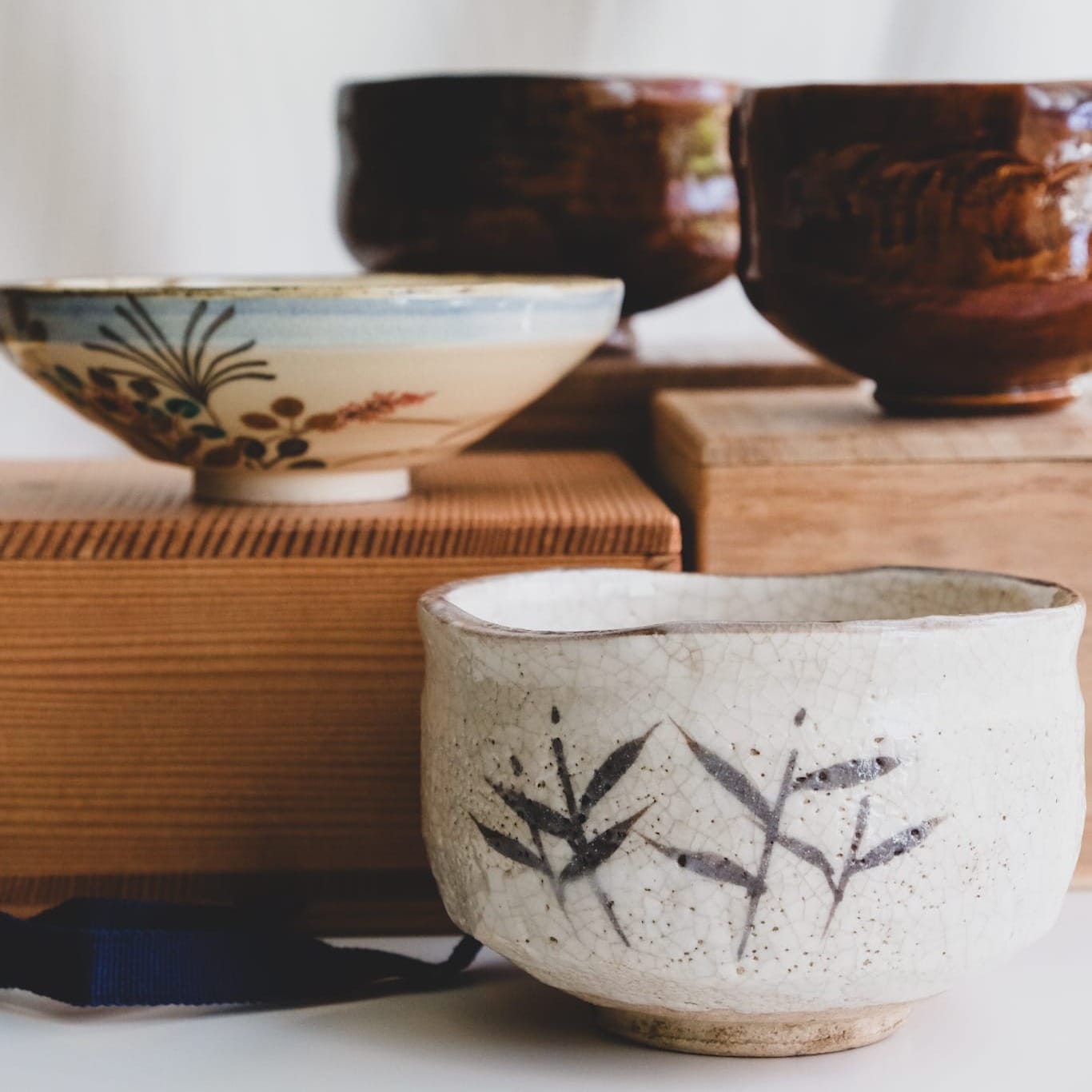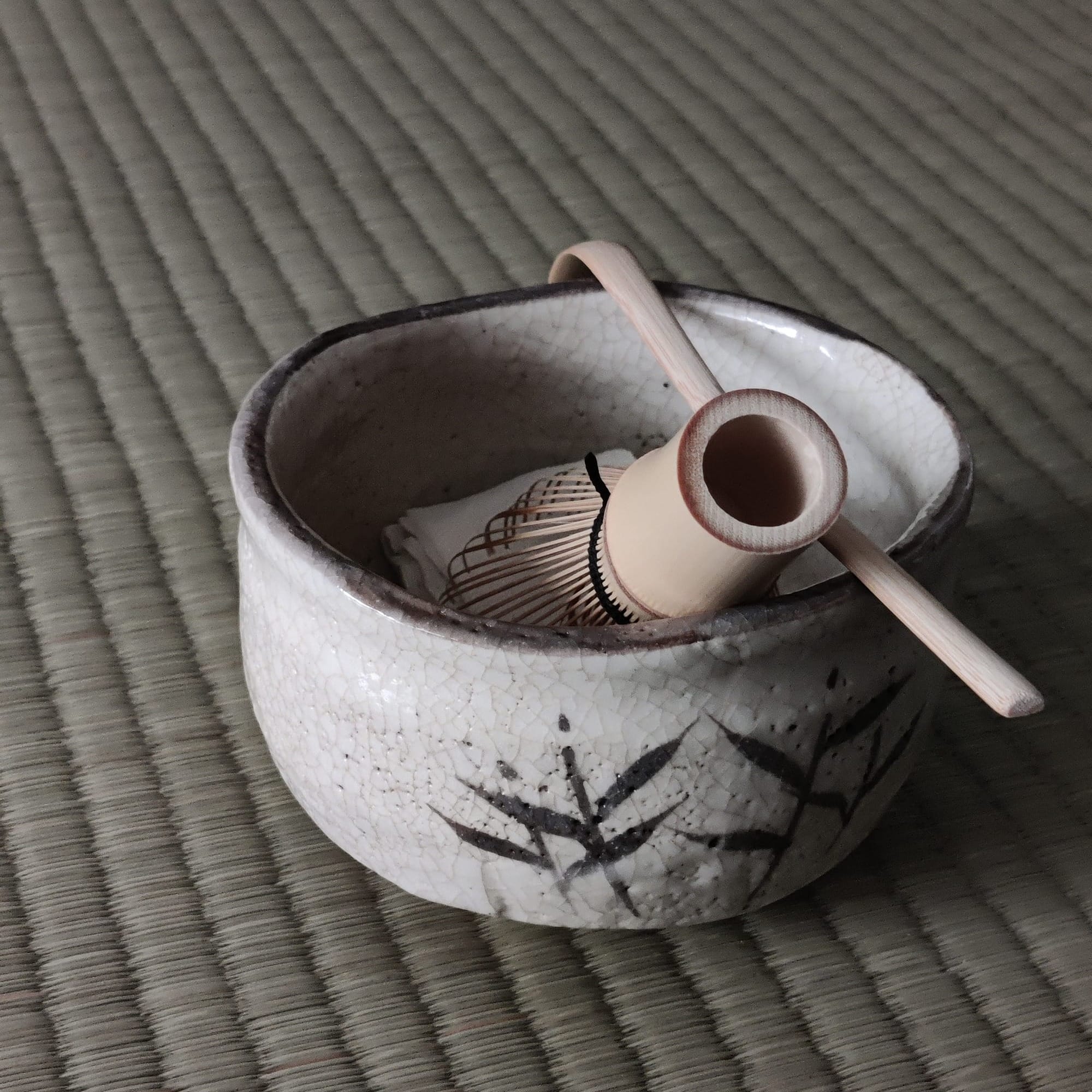How to Care for Your Chawan: Before & After Making Matcha
Growing up, I was taught to clean everything we use for food and drinks with soap/detergent. In the tearoom, however, we are not supposed to do that. Imagine my face when I was told to clean the tea bowl using only water! But it all makes sense after learning more about it. See the FAQ section below.
A chawan (tea bowl) is more than just a vessel. It’s an essential part of the matcha experience. Proper preparation before use and careful cleaning afterward help maintain its beauty and longevity. This is especially important for chawan with porous glazes or clay bodies, like Raku ware.
Here’s how I take care of my tea bowls before and after each use:

Preparing a New Chawan
If you just got a new chawan, you’ll want to give it a proper bath before making your first bowl of matcha:
- Soak the chawan in warm water for about 10 minutes.
- Rinse it under warm water. If it's a used tea bowl, a gentle scrub with a soft towel can help remove any dust.
- Dry it with a clean, soft towel, and it's ready to use!
Before Making Matcha
Warming up your chawan before use helps bring out its best qualities and ensures a smooth matcha-making process:
- Add warm water to the bowl and let it sit for about 30-60 seconds.
- Discard the water and dry the chawan with a soft towel. Now it’s ready for matcha!
Cleaning Your Chawan After Use
Matcha can stain if left sitting too long, so cleaning your tea bowl as soon as possible is key:
- Rinse the chawan immediately (or as soon as you can) with warm water.
- Use your fingers or a soft towel to gently remove any remaining matcha.
- Dry it with a soft towel, then leave it in a well-ventilated area for at least a day or more, especially for porous tea bowls like Raku ware, to ensure it’s completely dry before storing.

Frequently Asked Questions About Chawan Care
Q: Why do I need to soak a new tea bowl before using it?
I first learned this step when I got my first Raku chawan. Because of its porous nature, I was advised to soak it in warm water before use. This helps seal the pores slightly and prevents excessive absorption. But don’t leave it soaking too long! I now follow this step with all my chawans, regardless of material, since it also helps lift any lingering dust or particles.
Q: Can I use dish soap to clean my chawan?
I wouldn’t recommend it. Soap can seep into porous glazes and leave behind unwanted residue. It’s best to stick with warm water and a soft towel. Also, avoid abrasive sponges, as even tiny scratches can allow moisture to get trapped under the glaze over time.
Q: Why do I need to let my chawan air dry for so long?
Moisture trapped inside the tea bowl, even if it feels dry to the touch, can lead to mold or hidden damp spots in the clay body. Air-drying for at least a full day (longer for porous tea bowls) helps ensure it’s completely dry before storing.
Q: How can I tell if my chawan is fully dry before storing it?
Here’s a method I learned from a Chanoyu tea master on Instagram: weigh your tea bowl!
- When you first get your chawan, place it on a kitchen scale and note its dry weight.
- After using and rinsing it, weigh it again. If the weight is higher, that means moisture is still present.
- Check daily until the weight returns to its original measurement. This indicates it's completely dry and safe to store.

Caring for your chawan doesn’t have to be complicated, but a little extra attention goes a long way in keeping your tea bowl in good condition. Treat it well, and it will be a treasured companion on your matcha journey for years to come.
Happy whisking! - Jan
Member discussion